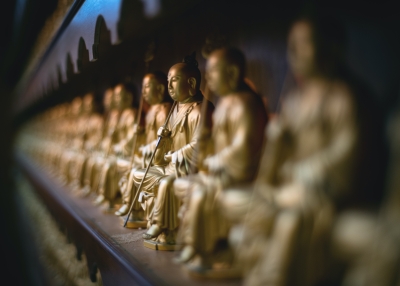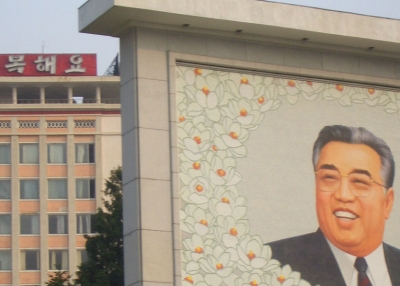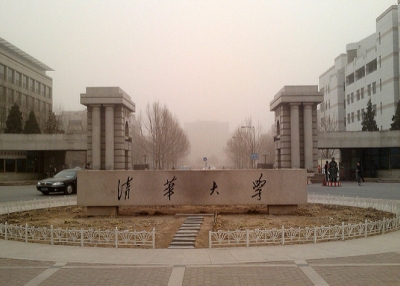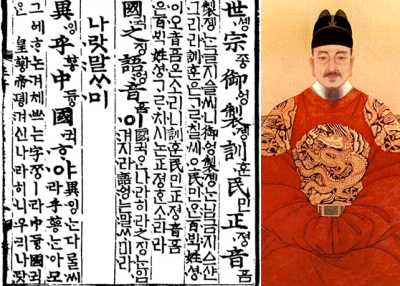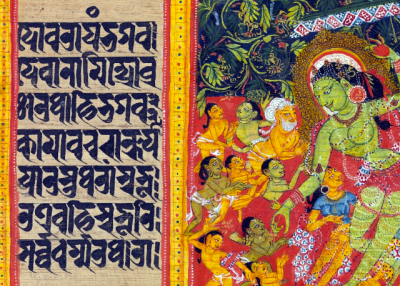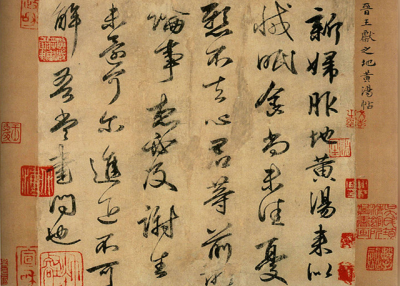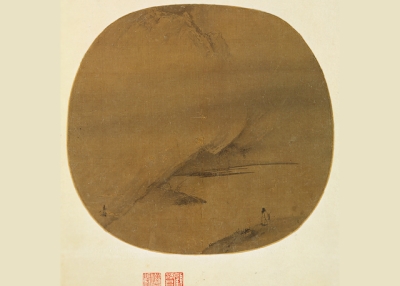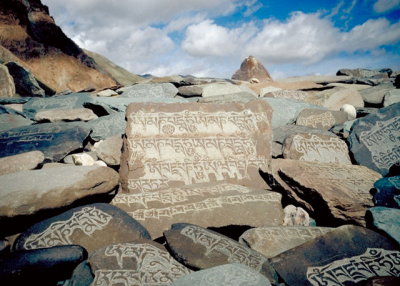Korean Language
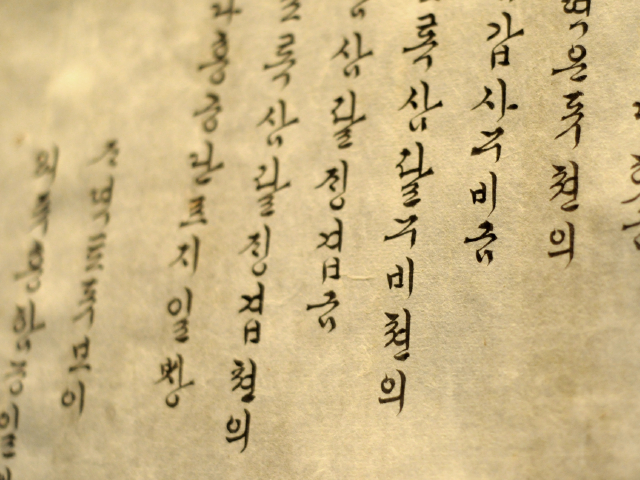
Korean, known in the language itself as Kugo, is the language of the Korean Peninsula in northeast Asia. In the Democratic People's Republic of Korea (DPRK, or North Korea) there are 20 million speakers and in the Republic of Korea (ROK, or South Korea) there are 42 million speakers. Korean is also spoken by almost 2 million people in China, mainly in provinces bordering North Korea. There are approximately half a million speakers in Japan and Russia, as well as significant numbers in the United States (over 600,000) with large communities on the west coast and in New York. Other communities are found in Singapore, Thailand, Guam, and Paraguay. The total number of speakers is 72 million (Grimes 1992).
Korean has been listed as a critical language by the American State Department because of our strategic business and security interests in the Korean-speaking world, as well as a heritage language due to the number of American citizens of Korean heritage. North Korea was declared a palpable threat in 2003 after they tested nuclear weapons despite the disapproval of the United Nations. South Korea is one of our largest East Asian trading partners. In 2007 the United States exported $$ 34,644.8million to South Korea, an amount on par with some of our English-speaking trade partners. This amount has increased by 582% since 1985. In 2007 the United States has imported $47,562.3 million in goods from these countries, an increase of 475% since 1985.
According to the 2000 census there are 900,000 Korean speakers in the United States. In 2006, 7,145 higher education students were studying Korean and in 2000 202 students in grades 7-12. (Source: http://www.lmp.ucla.edu/Profile.aspx?LangID=76&menu=004)
Linguistic Affiliation
Although classified as a language isolate, many theories have been proposed to explain the origin of Korean. The most prominent of these link Korean to the Altaic languages of central Asia, a family that includes Turkish, Mongolian, and the Tungusic (for example, Manchu) languages of Siberia. Others would argue for the inclusion of Uralic languages (Hungarian and Finnish) and Japanese in this macro family. Although not definitively proven, this affiliation is accepted by most Korean linguists and deemed likely by Western linguists as well. The competing theory associates Korean with the Dravidian languages of southern India, or to Austronesian languages.
Determining Korean's linguistic affiliation is complicated by a long history of contact with the Japanese and Chinese languages. Not surprisingly, Korean shares certain linguistic features with each of these languages.
Language Variation
Officially, there are two standard varieties of Korean in Korea: the Seoul dialect in South Korea and the Phyong'yang dialect in North Korea. The dialects are distinguished and regulated by each country's national language policy.
Regional dialects roughly correspond to province boundaries. Thus, South Korean regional dialects are Kyonsang, Chungchong, Cholla, and Cheju Island. The North Korean regional dialects are Hamkyong, Pyongan, Hwanghae. Some of the dialects are not easily mutually intelligible.
The Korean language is part of a northern Asian language known as Altaic, that includes Turkish, Mongolian and Japanese, suggesting early Northern migrations and trade. Korean was also heavily influenced by Chinese, but have adopted its own writing system in the 16th century.
History
Korean is among the world's most misunderstood and misrepresented languages because its origins are obscure and the subject of ongoing scholarly debate. Evidence suggests that Korean and Japanese belong to the Altaic language family, which also includes Turkish and Mongolian. Chinese, although it belongs to a completely different language family, influenced Korean greatly. Many believe that the language emerged from a single cultural source. But just as the Korean people of today did not descend from a single homogeneous race, the Korean language of today did not evolve from a single language. Various groups who populated the Korean peninsula in ancient times merged into a homogeneous people with a single language during the unifications of the sixth to the fourteenth century. By the fifteenth century, Korean had emerged as the language we now know.
The modern Korean writing system, han'gul, was devised in 1443 during the reign of King Sejong, perhaps the greatest monarch of the Yi Dynasty (1392-1910). Before han'gul, other Korean scripts used a complex system of Chinese characters to represent the sounds of Korean. But because of the differences between Chinese and Korean, Chinese characters could not adequately denote Korean speech. Further, only the elite could afford the time necessary to study Chinese, so King Sejong (1397-1450) commissioned the invention of a phonetic script both more efficient and more accessible to the common people. Described as one of the most scientific alphabets ever devised, han'gul consists of 24 letters: 14 consonants and 10 vowels. Combinations of these letters represent 5 double consonants and 11 dipthongs. The letters, grouped in clusters of 2, 3, or 4, form syllables and words. The invention of han'gul marks a major achievement in the history of Korean culture because it has contributed to one of the highest literacy rates in the world.
A variety of grammatical forms reveal the high value Koreans traditionally placed on expressing and receiving respect. Korean verbs have several forms to indicate the inferior, equal, or superior status of one speaker to another. Koreans now use only a few respectful styles, a change reflecting growth of the middle class and greater social equality.
Modern Korean still reflects China's deep influence over centuries. Roughly half the Korean vocabulary consists of words derived from Chinese, mainly through the Confucian classics. Today South Koreans generally use a hybrid writing system in which words derived from Chinese are written with Chinese characters, while Korean words are written in han'gul. (North Koreans totally eliminated Chinese characters and write even Chinese words in han'gul.) Despite word borrowing, Korean is completely distinct from Chinese, in sound and in sentence structure.
Authors: Amanda Snellinger, with historical essay by Ross King and Bruce Fulton.
Connect With Us
Asia Society
725 Park Avenue
New York, NY 10021
t: 212-327-9260
[email protected]
